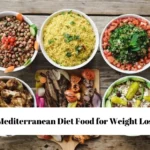When it comes to nutrition, vegetables are often overlooked as a protein source. However, many vegetables pack a surprising punch when it comes to protein content. In this article, we’ll explore 15 vegetables with the most protein, according to an RDN (Registered Dietitian Nutritionist). These nutrient-rich foods not only contribute to your daily protein intake but also offer essential vitamins, minerals, and fiber.
Incorporating high-protein vegetables into your diet can help support muscle health, weight management, and overall well-being. Whether you’re a vegetarian, vegan, or simply looking to enhance your meals with more plant-based options, these vegetables can elevate your nutrition while adding flavor and variety to your dishes. Join us as we dive into the details of these protein-packed powerhouses!
1. Edamame
Edamame, young soybeans, are a powerhouse of protein, offering about 18.5 grams per cooked cup. These vibrant green pods are not only rich in protein but also boast a complete amino acid profile, making them a valuable protein source for vegetarians and vegans.
Edamame is packed with dietary fiber, providing around 8 grams per serving, which aids in digestion and helps maintain a healthy weight. Additionally, they contain essential nutrients like iron, calcium, and vitamin K, contributing to overall health. The presence of antioxidants in edamame can also help combat oxidative stress in the body. Whether enjoyed steamed, in salads, or as a snack, edamame is a versatile and nutritious addition to any diet.
2. Lentils
Lentils are an excellent plant-based protein source, delivering approximately 18 grams of protein per cooked cup. They are not only rich in protein but also provide significant amounts of dietary fiber, which promotes gut health and aids in digestion. Lentils come in various varieties, including green, brown, and red, each with its unique flavor profile and texture.
They are low in calories yet high in essential nutrients, including folate, iron, and magnesium. Folate is crucial for DNA synthesis and repair, while iron is vital for transporting oxygen in the blood. Incorporating lentils into meals can enhance nutrient intake while providing a satisfying, hearty element to soups, stews, and salads.
3. Chickpeas
Chickpeas, or garbanzo beans, are not just a staple in Mediterranean cuisine but also a nutritional powerhouse, containing about 15 grams of protein per cooked cup. These legumes are rich in fiber, which helps regulate blood sugar levels and promotes satiety, making them an excellent option for weight management.
Chickpeas are also loaded with vitamins and minerals, including manganese, folate, and iron. Manganese plays a crucial role in bone health and metabolism. Furthermore, chickpeas can be easily incorporated into various dishes, from hummus to salads and curries, making them a versatile ingredient in many cuisines.
4. Green Peas
Green peas are often underestimated in their nutritional value, yet they pack a punch with about 9 grams of protein per cooked cup. They are also rich in fiber, vitamins A, C, and K, and a variety of antioxidants that contribute to overall health. The high fiber content in peas aids in digestion and helps maintain stable blood sugar levels, making them a smart choice for those looking to manage their weight.
Additionally, green peas provide essential nutrients like iron and magnesium, supporting energy production and muscle function. These sweet little gems can be enjoyed in various dishes, from soups and stews to salads and stir-fries.
5. Spinach
Spinach is a leafy green vegetable that offers around 5 grams of protein per cooked cup, along with a plethora of vitamins and minerals. This superfood is particularly high in vitamin K, which is vital for blood clotting and bone health. Spinach also contains significant amounts of iron, calcium, and vitamins A and C, contributing to its status as a nutrient-dense food.
The antioxidants found in spinach, such as lutein and zeaxanthin, are beneficial for eye health, protecting against age-related macular degeneration. Spinach can be consumed raw in salads, cooked into dishes, or blended into smoothies, making it a versatile option for enhancing nutritional intake.
6. Asparagus
Asparagus is a nutrient-dense vegetable that offers about 4 grams of protein per cooked cup. It is also low in calories, making it an excellent addition to weight-loss diets. Asparagus is rich in vitamins A, C, E, and K, along with folate and fiber. The high levels of vitamin K support bone health, while folate plays a crucial role in cell division and DNA synthesis.
Additionally, asparagus contains antioxidants that can help reduce inflammation and protect against chronic diseases. This versatile vegetable can be grilled, steamed, or roasted, and pairs well with a variety of dishes, enhancing both flavor and nutrition.
7. Broccoli
Broccoli is often hailed as a superfood due to its impressive nutritional profile, offering about 4 grams of protein per cooked cup. It is rich in vitamins C and K, as well as folate and fiber, making it a great addition to a healthy diet. The high levels of vitamin C in broccoli support the immune system and promote healthy skin, while vitamin K is essential for bone health.
Broccoli is also known for its cancer-fighting properties, thanks to the presence of sulforaphane, a compound that may help protect against certain types of cancer. This versatile vegetable can be enjoyed raw in salads, steamed as a side dish, or incorporated into stir-fries and casseroles.
8. Brussels Sprouts
Brussels sprouts are another nutrient-dense vegetable, providing about 4 grams of protein per cooked cup. They are also high in fiber, which aids digestion and promotes feelings of fullness. Rich in vitamins C and K, Brussels sprouts contribute to immune health and bone strength.
Additionally, they contain antioxidants that help reduce inflammation and protect against chronic diseases. The unique flavor of Brussels sprouts can be enhanced through roasting, steaming, or sautéing, making them a delicious side dish or addition to salads. Their versatility and health benefits make them a worthy addition to any meal plan.
9. Cauliflower
Cauliflower has gained popularity as a low-carb substitute for grains and legumes, offering about 2 grams of protein per cooked cup. Despite its relatively lower protein content, cauliflower is rich in vitamins C and K, folate, and fiber. The high vitamin C content supports immune function and skin health, while vitamin K is crucial for bone health.
Cauliflower’s unique texture allows it to be used in various ways, from cauliflower rice to pizza crusts and mashed cauliflower. Its versatility makes it an excellent choice for those looking to increase vegetable intake while reducing carbohydrates.
10. Mushrooms
Mushrooms are a unique addition to the vegetable category, providing about 3 grams of protein per cooked cup. They are low in calories and rich in essential nutrients, including B vitamins, selenium, and antioxidants. The presence of B vitamins supports energy metabolism and brain health, while selenium is vital for antioxidant defense and immune function.
Mushrooms can also enhance the flavor of dishes without adding significant calories or fat. Available in various types, such as shiitake, portobello, and cremini, mushrooms can be used in soups, stir-fries, salads, and more.
11. Peppers
Bell peppers, especially the red variety, are not only colorful but also nutritious, providing about 1 gram of protein per medium-sized pepper. They are exceptionally high in vitamin C, with one bell pepper containing more than the daily recommended intake. This vitamin is crucial for immune function, skin health, and the absorption of iron from plant-based foods.
Bell peppers also contain various antioxidants, including carotenoids and flavonoids, which help combat oxidative stress in the body. Their sweet, crunchy texture makes them a perfect addition to salads, stir-fries, or as a healthy snack when sliced.
12. Artichokes
Artichokes are often overlooked but are a nutritious vegetable that offers around 4 grams of protein per cooked medium artichoke. They are also high in fiber, which supports digestive health and helps maintain a healthy weight. Artichokes are rich in antioxidants, including cynarin and silymarin, which may support liver health and improve cholesterol levels.
Additionally, they contain vitamins C and K, contributing to overall health. Artichokes can be enjoyed steamed, roasted, or grilled, making them a delicious and nutritious addition to various dishes.
13. Sweet Potatoes
Sweet potatoes, while primarily known for their carbohydrate content, still provide about 2 grams of protein per medium-sized potato. They are rich in vitamins A and C, providing antioxidant benefits and supporting immune health. The fiber content in sweet potatoes aids digestion and promotes feelings of fullness, making them a great option for weight management.
Sweet potatoes also have a low glycemic index, which means they can help regulate blood sugar levels. They can be prepared in numerous ways, including baking, boiling, and roasting, making them a versatile ingredient in both savory and sweet dishes.
14. Kale
Kale, a popular leafy green, provides about 3 grams of protein per cooked cup, along with a wealth of vitamins and minerals. It is particularly high in vitamins K, A, and C, which contribute to bone health, immune function, and skin health.
Kale also contains antioxidants that can help reduce inflammation and oxidative stress in the body. The fiber in kale supports digestive health, making it an excellent addition to salads, smoothies, and cooked dishes. Its robust flavor can enhance a variety of recipes, making it a versatile and nutritious option.
15. Collard Greens
Collard greens are a nutrient-dense leafy green, offering about 5 grams of protein per cooked cup. They are rich in vitamins A, C, and K, along with fiber and calcium. The high vitamin K content is crucial for bone health, while vitamin A supports vision and immune function.
Collard greens also provide significant amounts of antioxidants that can help protect against chronic diseases. Their hearty texture makes them suitable for braising, steaming, or adding to soups and stews, providing a nutritious and flavorful element to various meals.
Conclusion
Incorporating the 15 vegetables with the most protein, according to an RDN, into your diet is a smart way to boost your nutritional intake. Not only do these vegetables provide a significant amount of protein, but they are also rich in vitamins, minerals, and antioxidants that contribute to overall health.
Whether you enjoy them in salads, soups, or as main dishes, these high-protein options can easily fit into any meal plan. By diversifying your vegetable intake, you can enjoy a range of flavors while meeting your dietary needs effectively.
FAQs
1. What are some of the highest protein vegetables?
Some of the highest protein vegetables include edamame, lentils, chickpeas, and green peas, all of which offer significant amounts of protein per serving.
2. How can I incorporate high-protein vegetables into my diet?
You can add high-protein vegetables to salads, soups, stews, and stir-fries, or enjoy them as snacks or side dishes. They can also be blended into smoothies for an extra nutrient boost.




